30 October 2023
![]() 6 mins Read
6 mins Read

With warm water temperatures and underwater terrain that includes caves, caverns, pinnacles, ethereal monuments surrounded by coral, and boulders that appear to have tumbled from islands to the sea floor, the Reef offers an array of enticing opportunities for scuba divers and snorkellers.
With several notable diving areas, how do you choose which is right for you? Check out our guide below to help you decide.
What it offers: Brilliant snorkel and dive sites; family-friendly accommodation; day-trip accessibility from Brisbane, the Gold Coast and Bundaberg; and marine-life encounters.
Getting there: Lady Elliot Island is roughly 86 kilometres north-east of Bundaberg, and is accessible by air.
Located on the Southern tip of the Great Barrier Reef, Lady Elliot Island is a haven for those seeking something a little specific – the Manta Ray.
For those who make the journey, a snorkelling encounter with one of these gentle giants is most definitely on the cards. They’re most often seen during the winter months, when they flock to the island on mass.
The coral edges on the island’s western side are also perfect for swimming alongside dolphins and turtles, with underwater gardens accessible as soon as you step off the beach. The excellent year-round water visibility also makes it a perfect option for families, as well as its cheaper accommodation offerings (compared to many of the other reef islands).
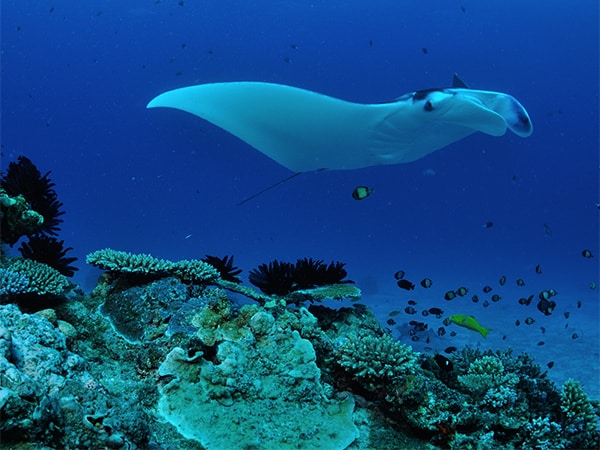
Lady Elliot Island is a haven for those seeking the Manta Ray.
What it offers: An iconic, unmissable stretch of the Great Barrier Reef.
Getting there: The Ribbon Reefs are a long and winding stretch of 10 individual reefs, located about 1.5 hours from Port Douglas.
Beginning north of Cairns, and finishing East of Lizard Island, the Ribbon Reefs fringe along a 200 km stretch of the Great Barrier Reef. They are relatively isolated and support a huge range of biodiversity. A trip here will reward you with huge plate corals, delicate anemones, walls, channels, caves, clams, canyons and shallow coral gardens.
Many divers and snorkellers come for the spectacular drop-off, located over the Coral Sea trench, granting 30-metre-deep water visibility. Others come for the famous Cod Hole, where massive potato cod can be found. Yet, all agree that Ribbon Reef and its shallow lagoons, rich coral and diverse marine life make it a necessary pit-stop.

The Ribbon Reefs are a long and winding stretch of 10 individual reefs.
What it offers: Accessible dive sites for beginners, high levels of visibility on the outer reef, and great for night diving.
Getting there: Boat tours depart regularly from Cairns.
Featuring four individual dive sites, each varying in scale and opportunity, Milln Reef’s clear, turquoise waters offer swimmers a relatively relaxed entry point to the Great Barrier Reef.
Navigate your way through both shallow and deep dive opportunities, with depths varying from 10 to 20 metres in various sections. Whale Bommie dive site, one of several on the reef’s western side, is ideal for deep dives with a number of small caves and a dense population of tropical fish ready and waiting to be discovered.
What it offers: Practically deserted beaches, walk-in beach snorkelling, luxurious accommodation and camping opportunities.
Getting there: Air transport to Lizard Island departs from Cairns.
Lizard Island is a National Park covering 1013 hectares of natural wonders. Completely secluded from the rest of the world, it is one of the Great Barrier Reef’s most northern dive points, and celebrated for its many private beaches and isolated snorkel spots.
Over 350 species of corals can be found in the surrounding waters, with lots of marine life also calling Lizard home. The fringing reef is typically colourful, healthy and vibrant, with snorkelling sites available right off the beach.
Divers are provided many sites just a short boat trip away, as well as day trip opportunities to surrounding, more advanced diving locations.
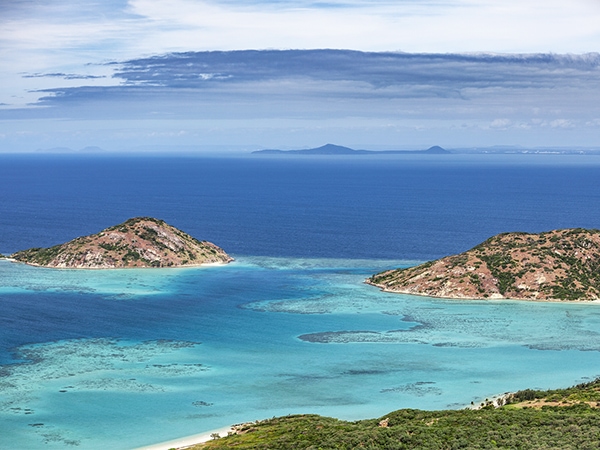
Lizard is one of the Great Barrier Reef’s most northern dive points.
What it offers: The closest Whitsunday Island to the outer reef, exceptional snorkelling, and an underwater gallery.
Getting there: Flights to Hayman depart from Hamilton Island.
As the closest Whitsunday Island to the outer reef, Hayman has a breadth of snorkelling options to keep you entertained.
Blue Pearl Bay provides some of the island’s best, where Priscilla, the giant Maori wrasse often surprises visitors. For those who feel more adventurous, take a boat ride to the Hardy Reef pontoon.
Here you can snorkel among clownfish, rays and a friendly 2-metre-long groper that patrols the area.
Hayman Island also provides another special opportunity. Located just offshore, the Ngaro Sea Trail is part of the Whitsunday Reef Recovery and Public Art Project. This unique underwater gallery-esque experience showcases a 3-metre-long aluminium sculpture of the iconic Maori Wrasse.
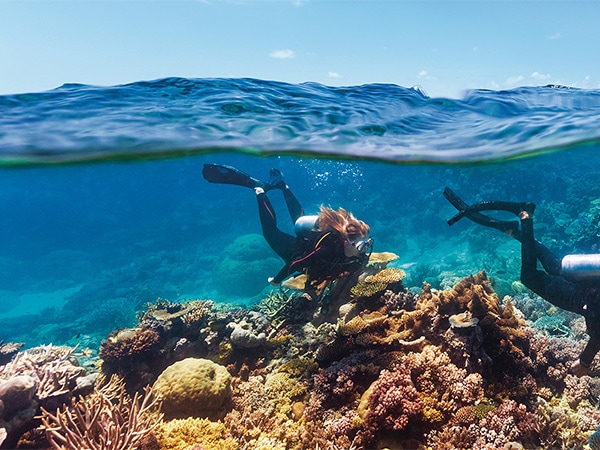
Hayman has a breadth of diving and snorkelling options.
What it offers: An intermediate/advanced dive site filled with both bountiful history and marine life.
Getting there: Diving the Yongala can be done as a single day trip as well as part of a multi-day reef adventure, with options available for departing from both Townsville and Cairns.
A mysterious and historically significant artificial reef teeming with marine life, the SS Yongala wreck is considered one of the world’s best dive sites. And it’s ready to explore just minutes from Townsville.
Almost a century after the Yongala sank, almost 75 percent of the superstructure remains intact. The 109-metre-wreck is covered with colourful coral and sponges, and has become a magnificent artificial reef and haven for diverse marine life. Fishing and penetration diving bans have upped fish numbers and prevented corrosion.
The site is brimming with both hard and soft corals, living alongside super-sized marine life.
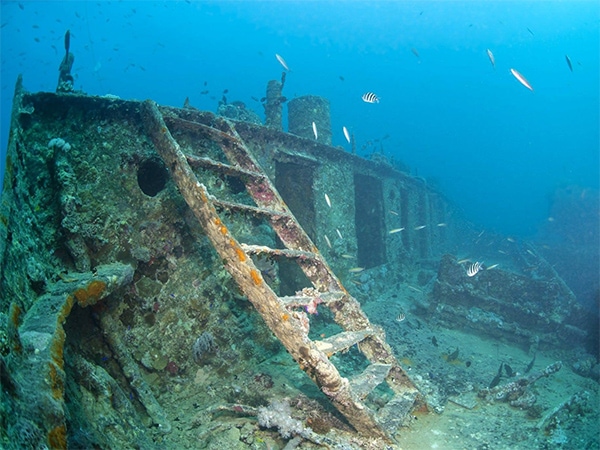
The Yongala is brimming with corals and super-sized marine life.
What it offers: A quintessential Great Barrier Reef experience that is family and first-timer friendly.
Getting there: 30-minute boat trips frequently depart from Cairns.
It’s easy to see why visitors from all over the world flock to Flynn Reef. Featuring expansive fields, hard coral and plenty of marine life, this underwater playground is what Great Barrier Reef postcards are made of.
You’ll find this highly-regarded dive and snorkel site just 60 km east of Cairns, boasting one of the closest reefs to the continental shelf and the Pacific Ocean. There are plenty of exploration opportunities and friendly marine life to encounter along the way.
Navigate through schools of clownfish, batfish, trout, cod, fusiliers, butterflyfish and angelfish along your journey. You’re also likely to see grey reef sharks, moray eels, octopus, lionfish, barracuda and nudibranchs.
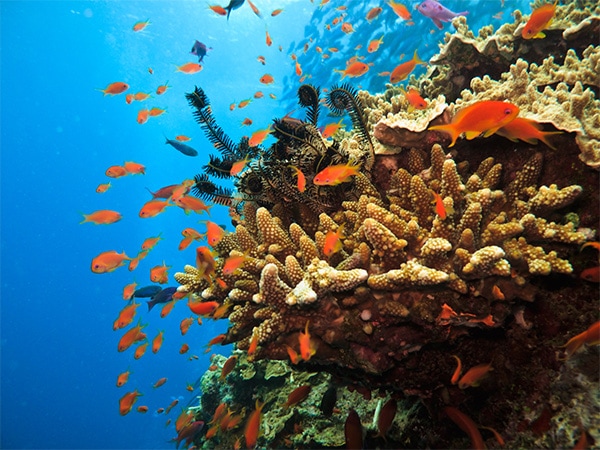
Get your quintessential Great Barrier Reef experience at Flynn Reef.
LEAVE YOUR COMMENT